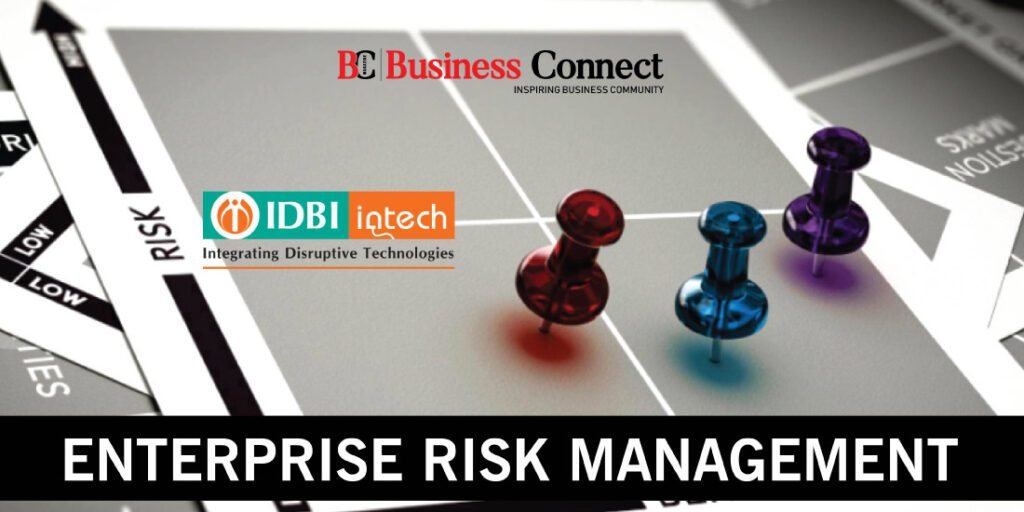Enterprise risk management
What is enterprise risk management?
Enterprise Risk Management manages the overall risks of an organisation in aggregate rather than independently. It not only deals with problems to be mitigated but it is a potential source of value creation.
The risk management function covers :
- Organisational set up for Risk Management with procedures, controls and risk reporting structures
- Comprehensive risk measurement approach – risk metrics with KRAs & KPIs
Policies consistent with the broader business strategies, risk appetite and operational matters
- Strong consistent reporting, monitoring and controlling risks;
- Periodical review and evaluation.
RISK-FOCUSED CULTURE FOR THE ORGANIZATION
ERM framework should enable forward-looking strategic risk insights to track mitigation plans and effectiveness. It requires setting limits, analysis of data, and working on the probability of occurrence to get a quantified score viz-a-viz the threshold limits. That is where quantitative key risk indicators (KRIs) come into play. Key Risk Indicators are like an early warning system for an Organisation. For each top risk, quantitative KRIs are defined to help anticipate when a risk might occur. Risk owners will be able to determine when and how to escalate risks for corrective discussions and actions. KRIs serves as the triggers to support actionable risk monitoring.
Risk identification & control(RCSA) is key to resilience. Resilient organizations use insights from advanced technology to respond proactively to potential risks and reduce their impact well in time. A framework to systematically collect and capture information about Incident & operational losses (including potential ones) will help to facilitate the identification of risk trends, risk escalation and wider organisational learning from an Enterprise Risk Management perspective.
A comprehensive, data-driven approach to risk performance tracking helps companies identify potential areas for cost savings and overall performance improvement. A prioritized set of Key Risk indicators help to establish risk thresholds and connect with the risk appetite levels adopted by the organisation across the various risk types in a methodical, data-driven, standardised manner. Thus a robust ERM eventually serves as a tool for taking action toward mitigation. Such a quantifiable ERM framework has a holistic approach to Risk Control than just being a qualitative tool for reporting.
KEY FEATURES OF OUR i-ERM SOLUTION
Our Enterprise Risk Management(i-ERM) solution provides rich dashboards to capture the most relevant risk metrics calibrated to the audience. It becomes an important input for governance, business continuity, compliance and organisation-wide strategic & operational decisions.
Prime features include:
- Risk & Control Self-Assessment (including risk aggregation and risk quantification & analytics)
- Top Risks & Key Risk Indicators
- Incident & Operational Loss Management
- Issue & Action Plan Management for tracking actionable status
- Risk Appetite
- Enterprise Risk Management Reports and Graphical Dashboards
- Business Intelligence report for Top management
- Data & Document Repository
- Technical requirements like information security
- Calendar based scheduling & training
Must Read:-
- Top 10 Young Entrepreneurs in India 2022
- Upcoming Indian Web Series for 2022-23
- Top 10 Hospitals in India 2022
- Top 10 richest player of the world 2021
- Top 10 highest-paid Indian Athletes 2021
- Top 10 highest paid CEO in the World
- Top 10 richest person of India
- Top 10 Highest Paid CEOs of India
- List Of Most Followed Facebook Pages in 2022
- The Success Story of Jeff Bezos
- Success Story Of Elon Musk
- Top 10 Business Magazine In India
- Top 10 Business Newspaper In India
- Top 10 richest billionaires in the world 2021
- Upcoming English Web Series in 2021
- Top 10 Tourist Places in India, places to visit after lockdown



